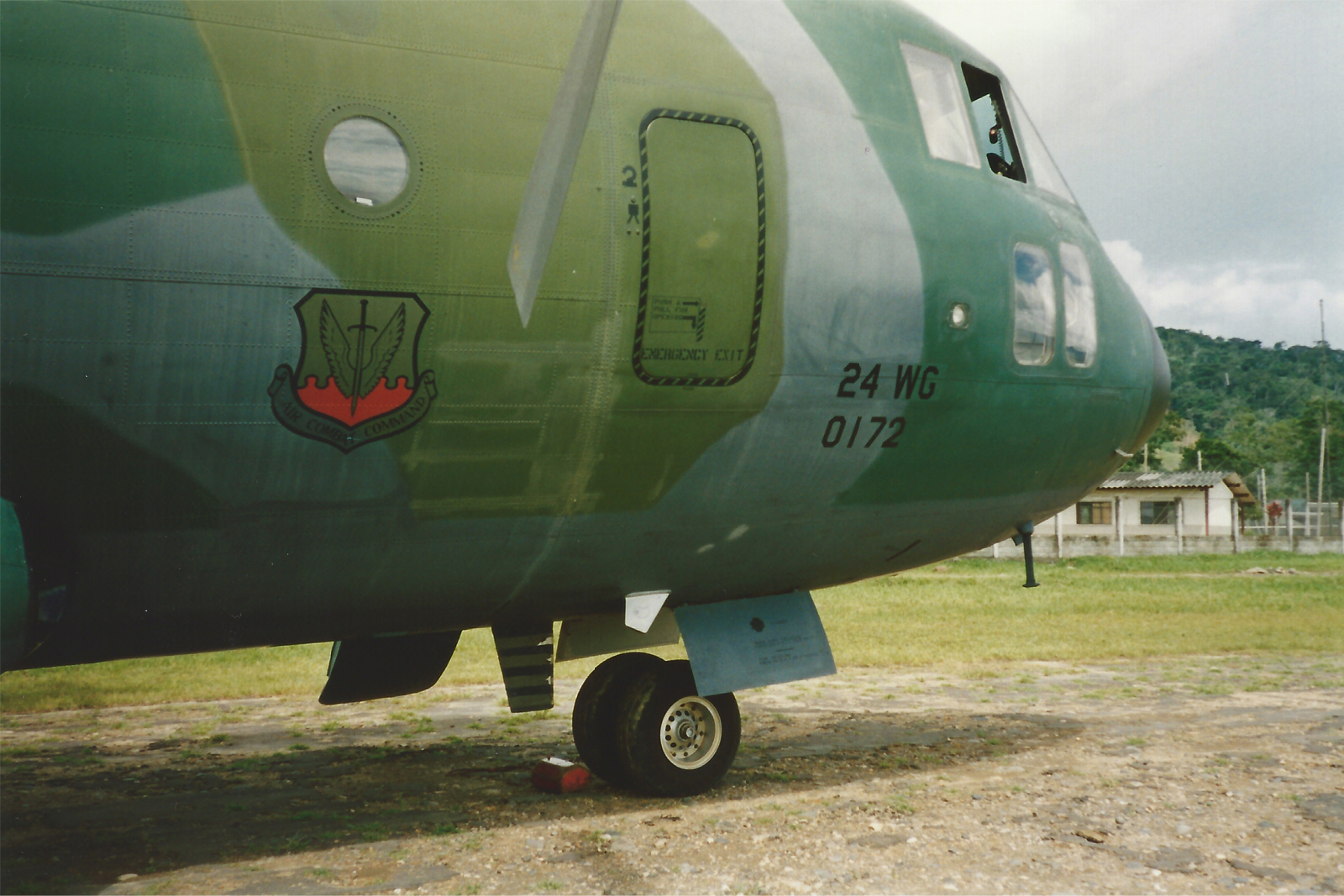Your other pilot is a woman
There’s a first time for everything and everyone.

I’m stationed at Howard Air Force Base in Panama as the unit’s first and only female pilot, flying the Alenia C-27, which is a short take off and landing twin-engine turboprop.
I moved to Panama with some trepidation about being a “chick stick” in the squadron but was pleased to find that it is a unit of professionals who simply care whether you’re a good pilot.
The majority of the fields we fly into are small dirt strips tucked in the valleys of the Andes Mountains or along the banks of the Amazon River.
Finding the field is more often than not a visual hunt, aided by unofficially navigating to the AM radio station closest to the airfield.
Once the hopefully-correct radio station is tuned in, it becomes the soundtrack for our approach above the triple canopy jungle, while blue and yellow macaws fly off our wing in formation.
Assuming the macaw escorts and AM signal bring us to the right airfield, the next phase of flight includes a pass over the runway without landing.
There are two reasons for this:
Firstly, to cross check what’s beneath us against the information we were given in the pre-brief … a lot of the villages we fly into are only accessible by air so making sure we were about to land at the right one is crucial.
The second reason we fly over the runway once before landing is to announce our arrival. By announce I mean scare, because the arrival message is intended for the donkeys, horses and other random 4-legged beasts grazing on or milling about the landing strip.
The second pass usually ends with the landing (unless a brazen 4-legged takes the field again) and then we do an impressive short-field landing, enabled by max braking and throwing our two engines into reverse.
Far from my first sortie in the C-27, I end up as the co-pilot on the crew flying the first US aircraft to an airfield in Tena, a small city in central Ecuador, right in the heart of the Amazon rainforest.
Our macaws and radio broadcast bring us to the correct field and on our first pass, we are pleased to see no 4-legged creatures fighting us for use of the runway. Our first pass does reveal what appears to be the entire village population lining the airfield perimeter, peering through the chain link fence. I suspect that none of the corrugated-tin roofed buildings surrounding the field are occupied as it seems that the first US aircraft landing in Tena warrants time off from work and school and anything else going on in the town.
We put on a good show and create an impressive dirt cloud with our engines and brakes. Our landing roll out is so truncated that we are able to turn into the mid-strip parking apron without having to back taxi.
As we turn onto the parking apron, I see the best-dressed marshaller I have ever seen. His wide smile is a better guide than any marshaling wand I’ve ever followed. As we start getting closer to him, his welcoming face rapidly deteriorates into concern, surprise and fear. His visual instructions about where to park have frantically disintegrated into a “stop here and NOW!” frenzy of arm movements that transcend any language barrier.
It is very clear that he sees something that’s disconcertingly awry that must be addressed immediately.
Now I’m concerned we have an engine fire, or have blown a corrugated tin roof off a building or worse, that we’ve blown over a villager. Or that an engine fire has melted a corrugated tin roof onto a villager.
My aircraft commander rapidly transfers control of the aircraft to me and gets out of his seat, while I shut down the left engine. As the turboprop blades slow and stop to no longer be a decapitation threat, my aircraft commander runs to the marshaller.
I sit ready, refreshing my mind on where the egress points and fire extinguishers are.
I watch my commander and the marshaller and realize my Spanish would not have been adequate to get us through the conversation, although I do know that “fuego” would have meant “get the fire extinguisher.”
My commander eventually gets our host to stop waving and pointing at our aircraft, then pats the shoulder of the now-much-calmer Ecuadorian marshaller and I translate this as there is no engine fire, all roofs are still in position and no villagers have been harmed by our arrival.
My commander gets back into his cockpit seat, welcomed only by my impatient interrogation, “What was that about? What did he say?”
As it turns out, the conversation had been in English … and had been one-sided.
The information our marshaller was so frantic to relay, was, “CAPTAIN! Your other pilot. It is a woman!”
For the best-dressed marshaler in Ecuador, “pilot” and “male pilot” are the same, and there has been no scenario in his life where “female” preceded “pilot.”
So our landing wasn’t only a first for Tena, Ecuador, it was also a first for him.

